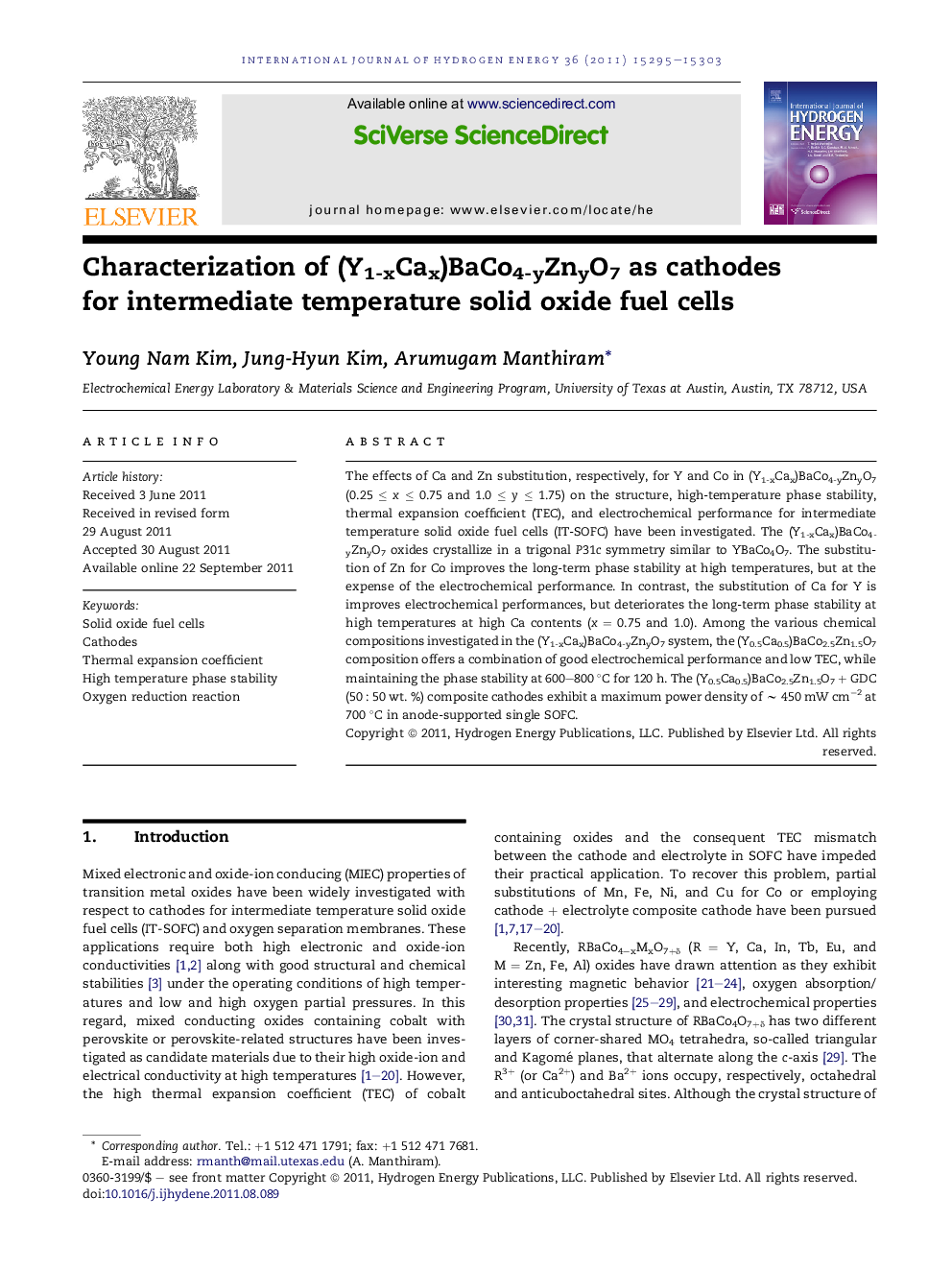| Article ID | Journal | Published Year | Pages | File Type |
|---|---|---|---|---|
| 1271823 | International Journal of Hydrogen Energy | 2011 | 9 Pages |
The effects of Ca and Zn substitution, respectively, for Y and Co in (Y1-xCax)BaCo4-yZnyO7 (0.25 ≤ x ≤ 0.75 and 1.0 ≤ y ≤ 1.75) on the structure, high-temperature phase stability, thermal expansion coefficient (TEC), and electrochemical performance for intermediate temperature solid oxide fuel cells (IT-SOFC) have been investigated. The (Y1-xCax)BaCo4-yZnyO7 oxides crystallize in a trigonal P31c symmetry similar to YBaCo4O7. The substitution of Zn for Co improves the long-term phase stability at high temperatures, but at the expense of the electrochemical performance. In contrast, the substitution of Ca for Y is improves electrochemical performances, but deteriorates the long-term phase stability at high temperatures at high Ca contents (x = 0.75 and 1.0). Among the various chemical compositions investigated in the (Y1-xCax)BaCo4-yZnyO7 system, the (Y0.5Ca0.5)BaCo2.5Zn1.5O7 composition offers a combination of good electrochemical performance and low TEC, while maintaining the phase stability at 600–800 °C for 120 h. The (Y0.5Ca0.5)BaCo2.5Zn1.5O7 + GDC (50 : 50 wt. %) composite cathodes exhibit a maximum power density of ∼ 450 mW cm−2 at 700 °C in anode-supported single SOFC.
► Zn substitution for Co improves the long-term phase stability at high temperatures. ► Ca substitution for Y improves the electrochemical performances. ► (Y0.5Ca0.5)BaCo2.5Zn1.5O7 offers good performance and phase stability.
